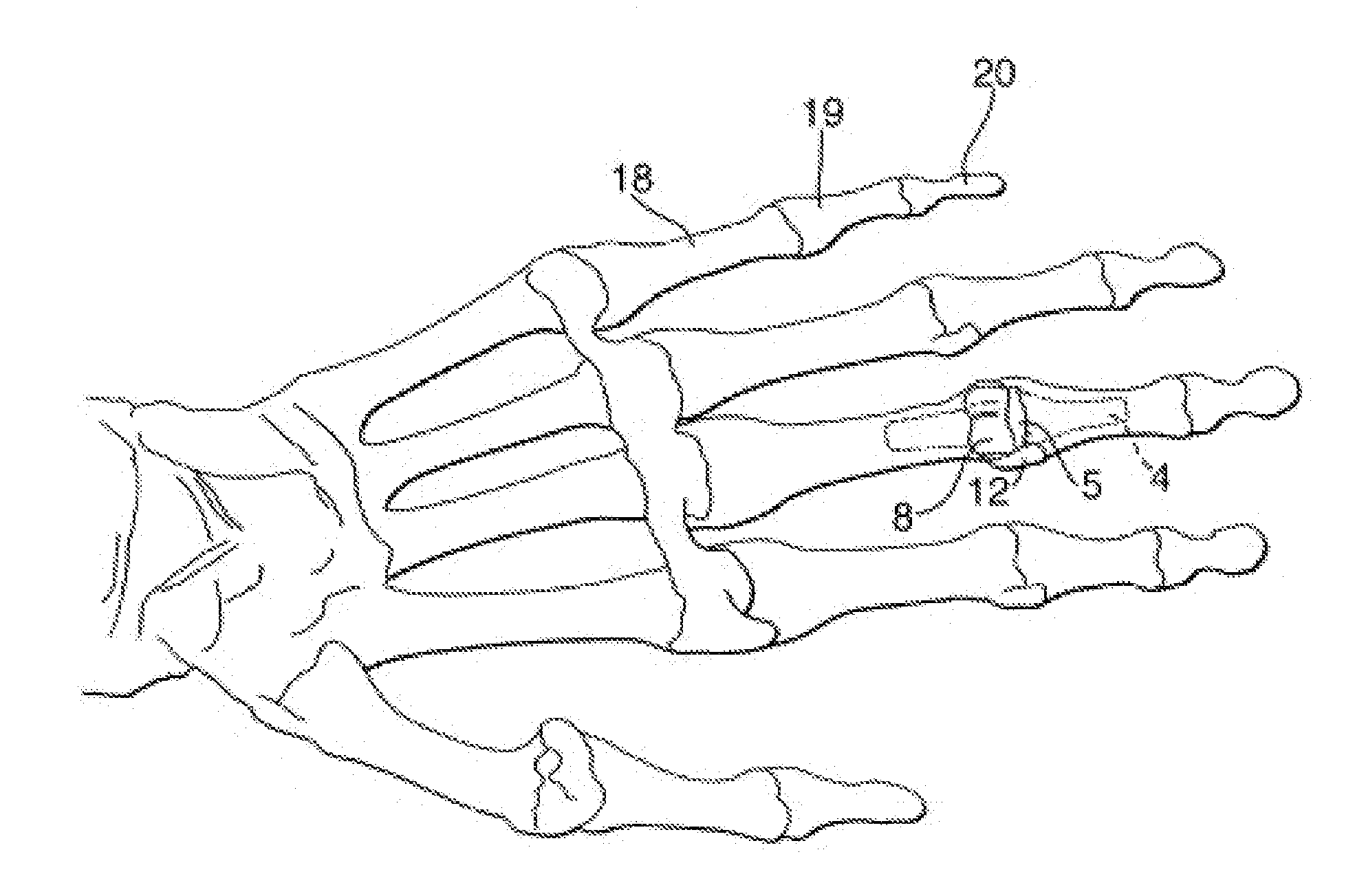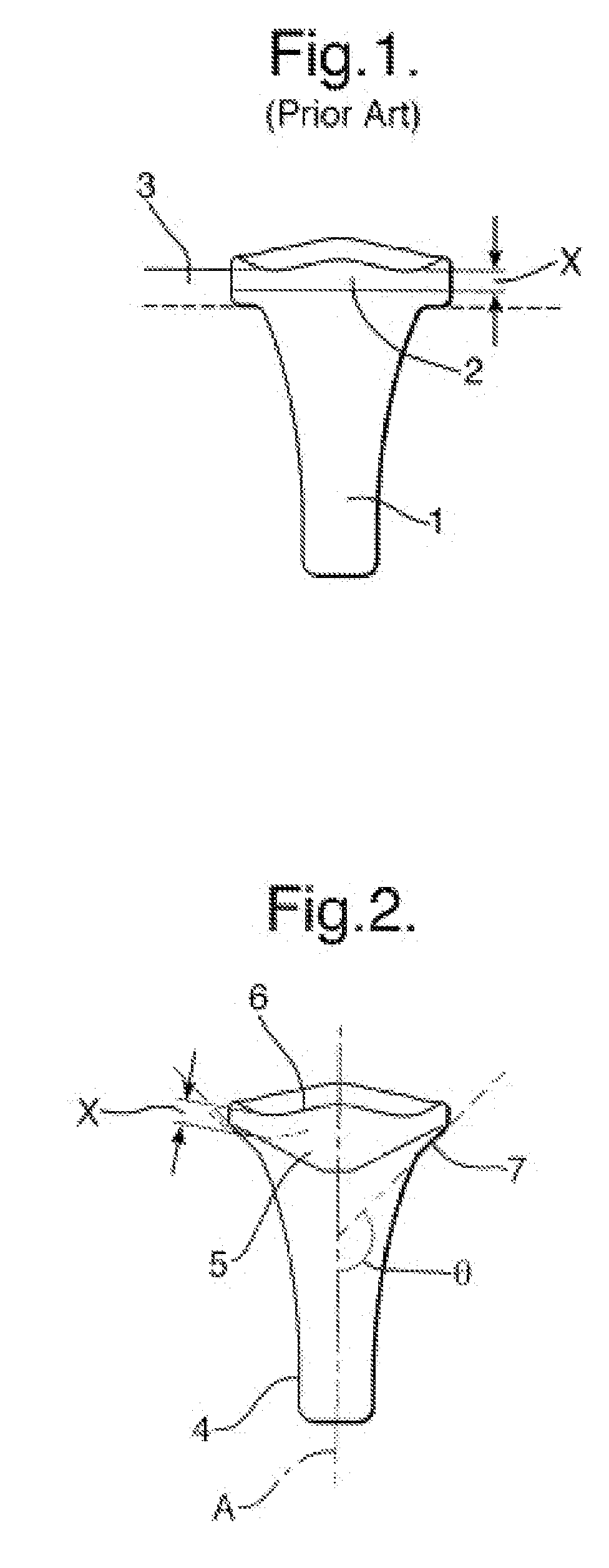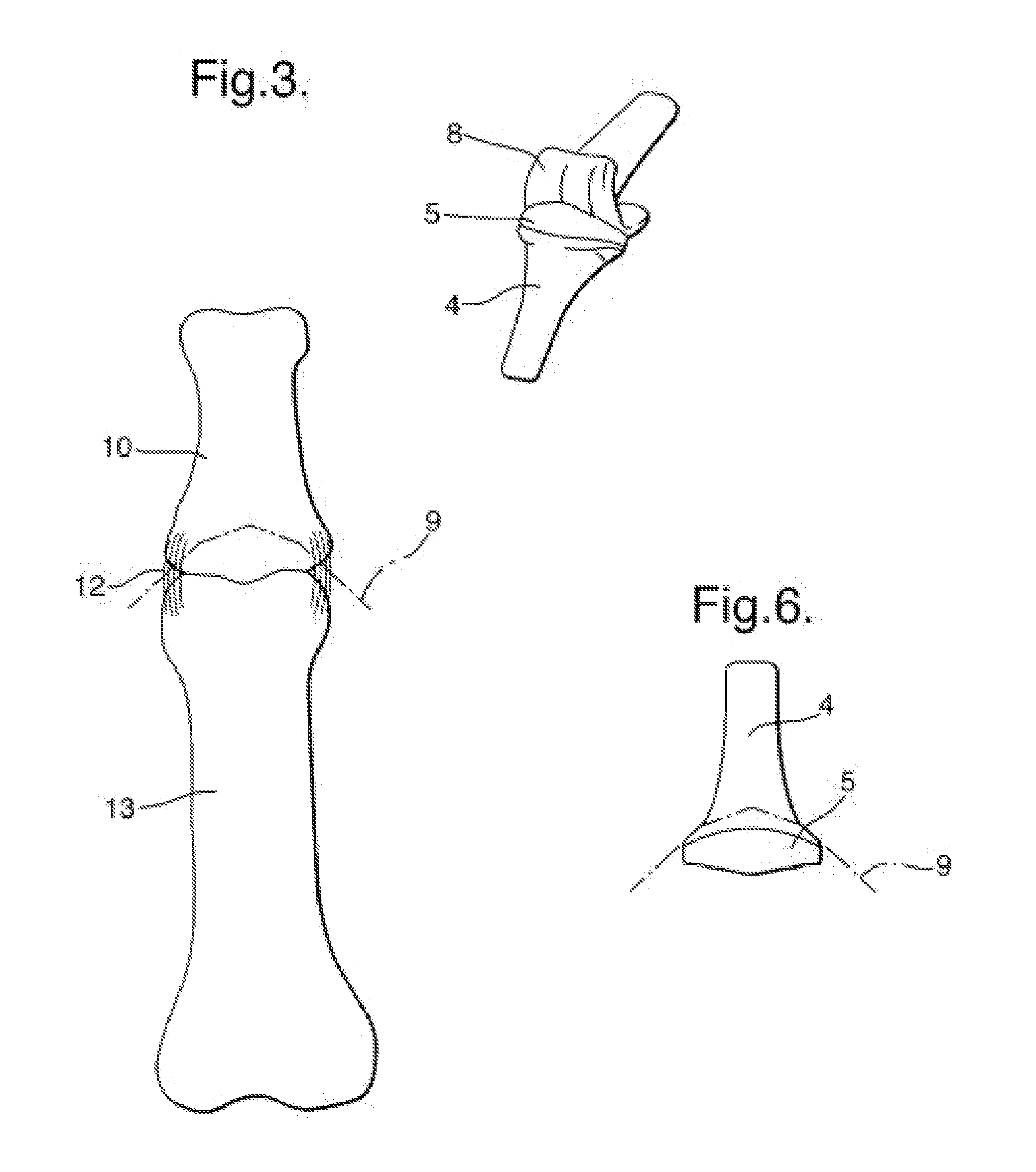Prosthesis
a technology of prosthesis and bone, applied in the field of prosthesis, can solve the problems of re-formation of the bone, endangering the function of the bone, and further erosion, and achieve the effect of reducing the number of prosthesis
- Summary
- Abstract
- Description
- Claims
- Application Information
AI Technical Summary
Problems solved by technology
Method used
Image
Examples
Embodiment Construction
[0024]As illustrated in FIG. 2 the prosthetic component of the present invention comprises a stem portion 4 and a head portion 5. The head portion 5 has an upper surface 6 which in use provides an articulating surface. The undersurface 7 will, in use, bear on the bone into which the stem is implanted. The head component 6 extending from the stem portion 4 and is ramped away therefrom at an angle θ which is greater than 90° to the longitudinal axis A of the shaft. As in FIG. 1, X represents the minimum amount of material required under the articulating surface. It will be noted by comparison with the arrangement illustrated in FIG. 1 that a significant amount of bone may be retained in using the present invention having the generally conical profile.
[0025]In the preferred arrangement, the head portion is formed of biocompatible plastics material such as ultra high molecular weight polyethylene and the stem portion from a biocompatible metal such as cobalt chrome.
[0026]In use the uppe...
PUM
 Login to View More
Login to View More Abstract
Description
Claims
Application Information
 Login to View More
Login to View More - R&D Engineer
- R&D Manager
- IP Professional
- Industry Leading Data Capabilities
- Powerful AI technology
- Patent DNA Extraction
Browse by: Latest US Patents, China's latest patents, Technical Efficacy Thesaurus, Application Domain, Technology Topic, Popular Technical Reports.
© 2024 PatSnap. All rights reserved.Legal|Privacy policy|Modern Slavery Act Transparency Statement|Sitemap|About US| Contact US: help@patsnap.com










